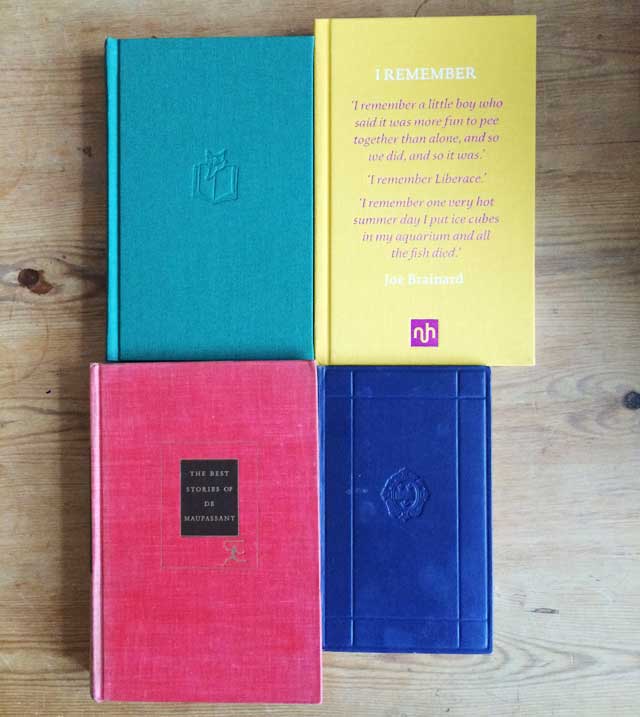‘This blog is written on the fly, latching onto whatever catches my eye in the world of books, and as such is happily prey to its fashions and fads. Book designers are in the business, among other things, of making books stand out and be noticed, and I’m in the business of noticing books.
That said, the seemingly incessant increase in book production and re-issuance, and the sometimes frantic attempts to make similar products look different, can make the books that don’t stand out, stand out. So it was when I was in Waterstone’s Piccadilly the other day and saw a table of what looked like unloved second-hand hardbacks, stacked, jacketless, in colourful piles, I immediately headed over.
These were Slightly Foxed Editions, from the book publishing arm of the now ten-year-old literary quarterly that largely celebrates the out of print, unfashionable and forgotten books and authors of what I’m tempted to call yesteryear.
SF Editions have been around for roughly half that time, and here’s their deal: memoirs – some but not all out of print – mostly published between the 1960s and 1980s but obviously dealing with the world of decades before, going from well-known names such as Graham Greene, Dodie Smith and Edward Ardizzone to new (to me) writers like Richard Hillyer, PY Betts and Christabel Bielenberg (author of the singularly titled ‘The Past is Myself’).
Production: small-ish hardbacks, dustjacketless, with differing colour boards – all blind embossed with the fox logo – and contrasting, unpatterned endpapers; nice heavy cream paper (“80gsm weight fine cream wove produced to order”); ribbon bookmarks; and each coming in a limited run of 2,000, which means that some of the early, sold out editions are now apparently fetching high prices on the second market – which has a subtle irony to it, seeing as the books are seemingly designed to look like the kinds of books you’d absentmindedly pick up in an junk/antique somewhere on a weekend outing, then decide not to buy. Yet here they are, looking gloriously out of place in the middle of the rampantly modern and individuated shelves of a major contemporary bookshop . . .’





